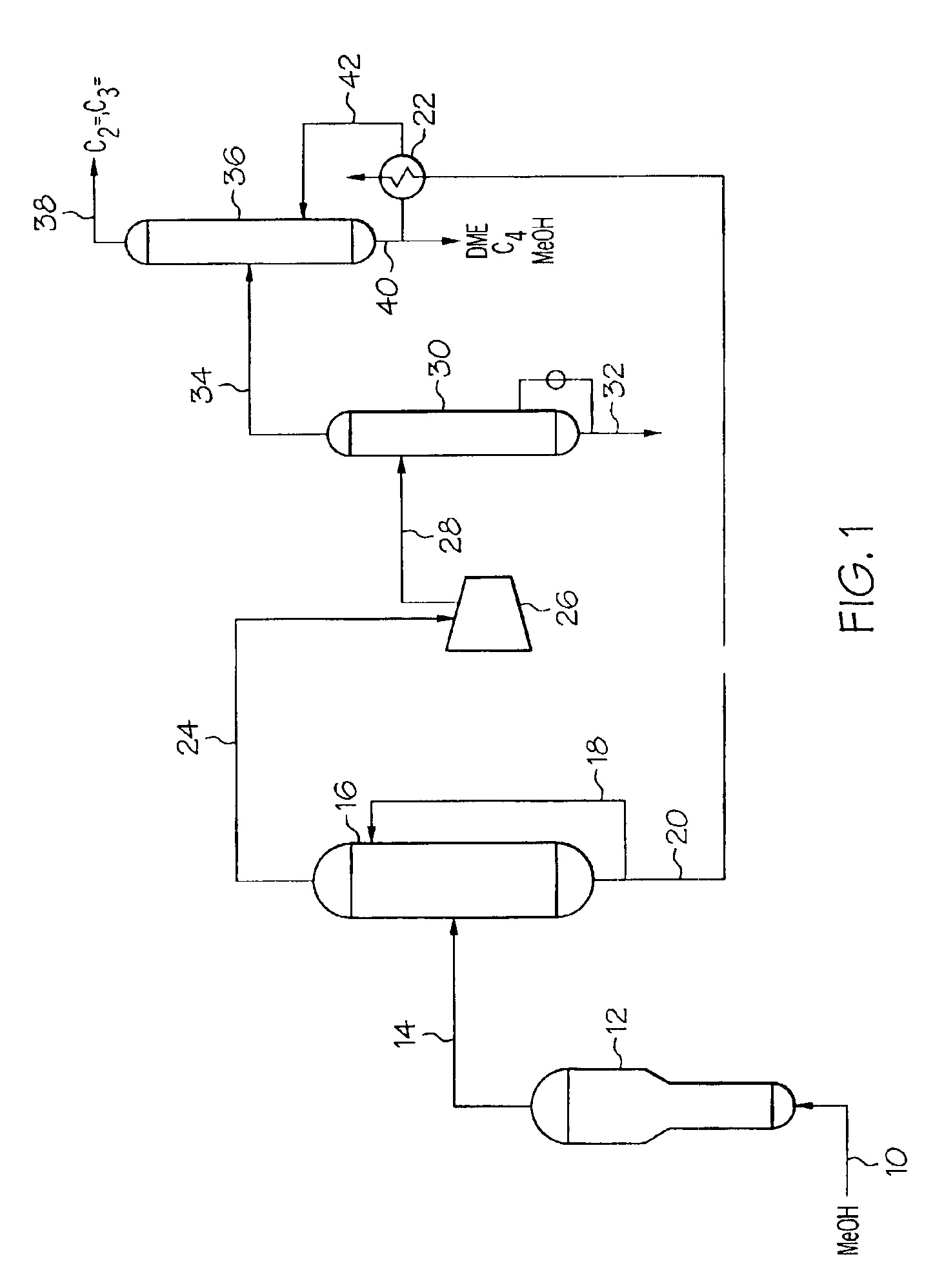Heat-integrated high pressure system for separation of byproducts from an olefin stream
a high-pressure system and byproduct technology, applied in the field of heat-integrated system and process, can solve the problems of adversely affecting the oligomerization of certain olefins, no discussion of alternative ways of using heat and no discussion of how heat is used from the quench bottom. achieve the effect of greater temperature differential
- Summary
- Abstract
- Description
- Claims
- Application Information
AI Technical Summary
Benefits of technology
Problems solved by technology
Method used
Image
Examples
Embodiment Construction
The present invention is a heat-integrated process for obtaining an ethylene and propylene enriched stream from an oxygenate to olefins reactor. The process comprises providing an effluent stream from an oxygenate to olefins reactor. The effluent stream comprises ethylene, propylene and one or more byproducts selected from the group consisting of propane, methyl acetylene, propadiene, dimethyl ether, acetaldyhyde and butylene. The process further includes quenching the effluent stream with the quench medium to provide an olefin stream. The olefin stream is separated into a heavy fraction comprising C5+ olefins and a remaining fraction.
The remaining fraction is fractionated in a distillation column having a reboiler to provide a first fraction and a second fraction. The first fraction comprises a majority of a first compound selected from the group consisting of ethylene and propylene and a second fraction comprising a majority of a second compound selected from the group consisting ...
PUM
| Property | Measurement | Unit |
|---|---|---|
| temperature | aaaaa | aaaaa |
| temperature | aaaaa | aaaaa |
| temperature | aaaaa | aaaaa |
Abstract
Description
Claims
Application Information
 Login to View More
Login to View More - R&D
- Intellectual Property
- Life Sciences
- Materials
- Tech Scout
- Unparalleled Data Quality
- Higher Quality Content
- 60% Fewer Hallucinations
Browse by: Latest US Patents, China's latest patents, Technical Efficacy Thesaurus, Application Domain, Technology Topic, Popular Technical Reports.
© 2025 PatSnap. All rights reserved.Legal|Privacy policy|Modern Slavery Act Transparency Statement|Sitemap|About US| Contact US: help@patsnap.com



